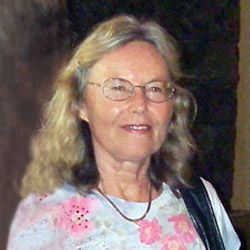SPONSOR:
Guam Water Works Dept.
PROJECT PERIOD:
04/01/05 - 02/28/07
ABSTRACT:
The benthic invertebrate community structure was characterized at outfall sites at Agana and Northern District Treatment Plant (NDTP) on Guam in July 2001. The intent was to characterize the infaunal species present and their abundance at these sites to satisfy the EPA requirements for the outfalls, and to provide a baseline prior to the extension of both outfalls to deeper sites further from shore. The polychaetes were the most diverse and abundant component, and thirteen other invertebrate groups were collected.
The purpose of this study was to compare samples collected during different times of the year, and incorporate the results of the 2001 summer sampling, for an annual baseline at the two sites. Samples were collected quarterly in April-June, October-December and, January-March, thus providing results for four sampling efforts completing an annual cycle. Any seasonal effects that cause changes in the ecology of the benthic organisms and the overall community structure were evident from the four sampling periods. As Guam is located in tropical West Pacific latitudes, a strong seasonal shift was not expected, but more subtle responses due to coastal conditions and local currents have an effect on the infaunal habitat in the sand. Other seasonal variables include human population numbers related to tourism and residential growth.
This baseline evaluation of the benthos at the two sewage outfalls off Guam provided an opportunity to compare the Guam outfall communities with the deep ocean outfalls off O'ahu, Hawai'i. Species present and abundances of the invertebrate taxa were compared with communities adjacent to the much larger capacity outfall systems off the south shore of O'ahu (Bailey-Brock et al. 2002). In general, large numbers of a few species in sands near the outfalls may be suitable indicator species for that region. These indicators may respond to the organic component of sewage as a food resource and thrive near the outfalls. Indicators are rare or absent away from the influence of the outfall.
PRINCIPAL INVESTIGATOR
JULIE H. BAILEY-BROCKProfessor (Emeritus), Zoology
Phone: (808) 956-6149
Fax: (808) 956-9812
E-mail: jbrock@hawaii.edu
